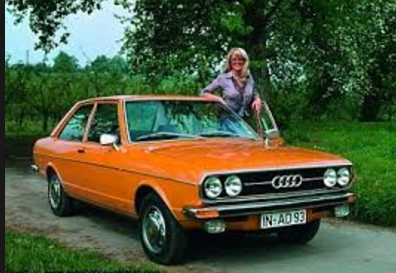Audi is a luxury automobile brand of German heritage, originating in Ingolstadt, Bavaria.


The company name is based on the Latin translation of the surname of the founder, August Horch. "Horch", meaning "listen" in German, which becomes "audi" in Latin. The four rings of the Audi logo each represent one of four car companies that banded together to create Audi's predecessor company, Auto Union. Audi's slogan is Vorsprung durch Technik, meaning "Advancement through Technology".

In September 1921, Audi became the first German car manufacturer to present a production car, the Audi Type K, with left-handed drive, essentially making driving safer. It developed a maximum of 50 PS (37 kW; 49 hp) at 2200 rpm, which was transmitted to the rear wheels, using a four-speed transmission. Claimed top speed was 95 km/h (59 mph).

Audi Type K (1922-1925)
Post the creation of Auto Union, the Audi Front was launched, Europe’s first first car to combine front-wheel drive with a six-cylinder engine. Using a 2.0 litre straight six configuration, the Front had a claimed maximum power output was 40 PS (29 kW; 39 hp) at 3,500 rpm capable of reaching speeds of up to 100 kph.

Audi Front (1933-1938)
Interestingly, post World War II and a little bit of restructuring implied selling a majority of Auto Union’s stake to Daimler-Benz in the mid 1950’s. However Daimler did not consider the arm to be profitable and eventually sold it to new owners in the early 60’s who used the name Audi to resurrect the brand after a 25 year gap.
Volkswagen went on to acquire a percentage of Audi and using technologies from other owned companies such as DKW, Volkswagen reduced the association of two stroke engines which was considered bad for its time by dropping DKW as a brand and fitting four stroke engines to the DKW’s and selling them simply as Audi, internally codenamed the F103.

Audi F103 (1965-1972)
Engineers at Audi at the time feared that Volkswagen did not consider Audi an asset during long term strategies secretly developed the Audi 100 which impressed the management enough to put the car into production as a runaway success. Subsequently, Audi created the Audi 80 in the early 70’s followed by the Audi 50.

Audi 80 (1966-1996)
Audi’s conservative image led to the development of four-wheel drive technology using Volkswagen’s military drive system to be implemented in an Audi performance and rally racing car. This performance car was known as the the Audi Quattro also making it the first large scale production of a car to feature a permanent all wheel drive system using a centre differential. For motorsports purposes a few of these were hand built and became very successful in motorsport with many prominent wins. Granted, motorsport wasn’t new to Audi given their participation in the 1930’s as part of the original silver arrows racing squads domination of Mercedes-Benz and Auto Union.

Audi Quattro (1980-1991)
In the 1990’s Audi began to focus their energies more directly towards BMW and Mercedes-Benz, the other German luxury car makers with the introduction of the Audi V8. In addition, they used an all aluminium space frame construction to help reduce weight without compromising on torsional rigidity as well as improved technologies to compete more effectively. The Audi A4 replaced the Audi 80 while the Audi A6 replaced the Audi 100.

Audi Model Range
Nomenclature soon updated to introduce ranges from the A1 to the A8L while the performance related models are referred to as S, R or RS variants. The SUV’s have the designation Q and varies based on the size of the vehicle. Audi’s present halo car is the R8 using a V10 engine with extreme performance figures to challenge many a supercar.

Audi R8 (2006 - present)






